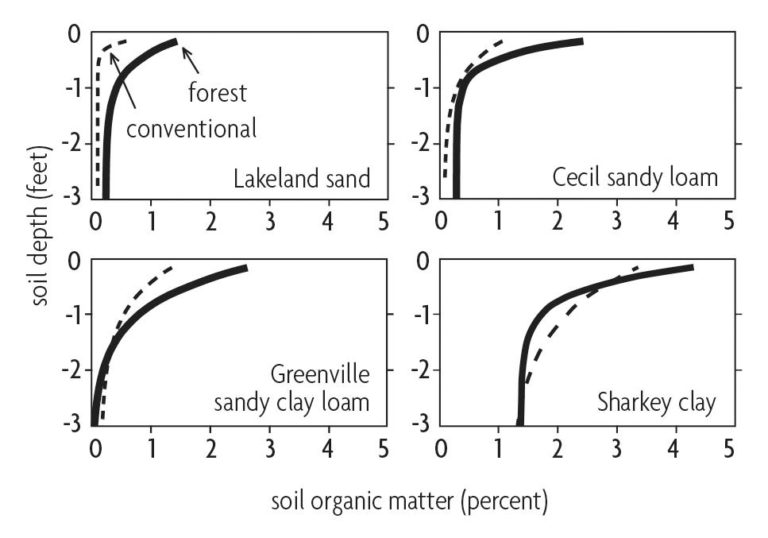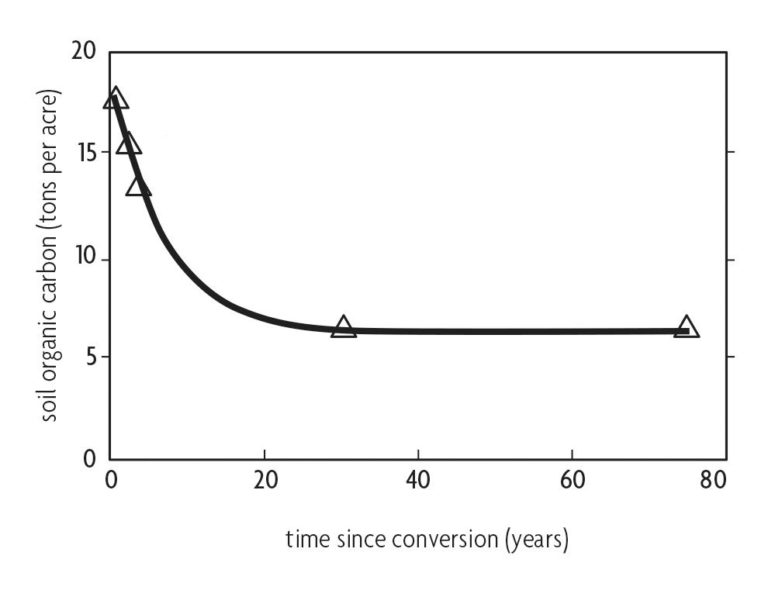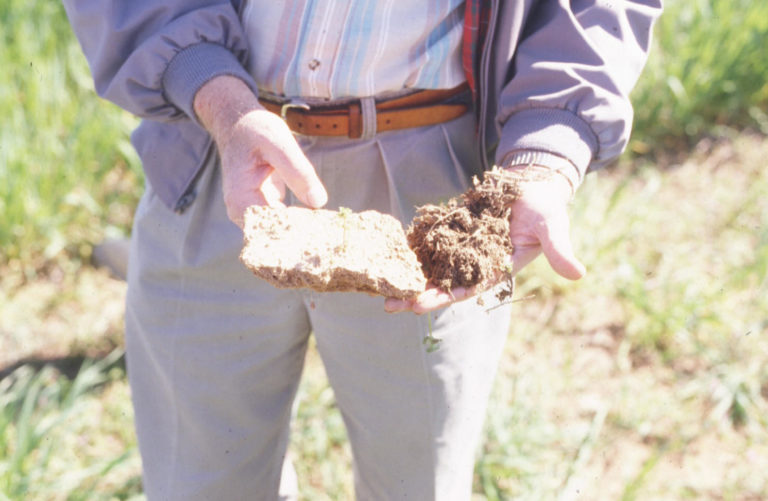Julia Gaskin, University of Georgia
Francisco Arriaga, University of Wisconsin–Madison
Alan Franzluebbers, USDA-ARS
Yucheng Feng, Auburn University
Soil organic matter is a complex mixture of plant debris, dead roots, soil microbe and insect bodies, animal manures and humus in various stages of decomposition and reformation. All the materials forming soil organic matter include carbon and are or were once living. Soil organic matter has an active fraction that decomposes over the course of days to years and a stable fraction that can persist for tens to hundreds of years [31]. As soil organisms decompose these fractions, the soil undergoes transformations that affect nearly every aspect of crop production, including compaction, water relationships, fertility and disease resistance.
Taking steps to increase soil organic matter is vital to ensuring agricultural productivity in the southeastern United States, where soils are usually acidic and do not have much natural fertility or organic matter. Southeastern soils are relatively old and have developed under warm and humid climatic conditions. Consequently, these soils are typically highly weathered. In forest soils of the Southeast, organic-matter concentrations are usually greater than 2 percent near the surface, and often less than 1 percent below 2 feet (Figure 3.1). The amount of soil organic matter varies with the amount of sand, silt and clay. Sandier soils have naturally lower soil organic-matter content. This can be seen in the Lakeland sand in Figure 3.1. Clayey soils, such as the Sharkey clay in Figure 3.1, tend to have higher soil organic-matter contents.
Organic matter is rapidly lost when the soil is disturbed. Over a 50-year period, 65 percent of the soil organic matter found under native forest was lost after the forest was converted to agriculture (Figure 3.2). Soil organic matter has been lost over the past 200 years in the Southeast because of excessive tillage and little use of crop rotation or cover crops. Tillage increases the oxygen content of the soil, stimulates soil microbes to decompose soil organic matter and breaks up soil structure that can protect organic matter from decomposition. When organic material is not added to the soil through manures, crop residues or cover crops, soil organic-matter levels rapidly decline in the Southeast. Relatively mild winter temperatures and moist soils in the region support soil microbial activity that decomposes organic matter over most of the year.
Soil organic matter was also lost in the Southeast due to the tremendous amount of erosion during the 19th and 20th centuries. Soil loss estimates where moldboard plowing was used range 8–13 tons-per-acre per year [11, 33]. Soil organic matter is concentrated in the surface soil and tends to be lighter than mineral soil, so it is preferentially removed as the soil surface is eroded [30].
As a result of past land-use practices in the Southeast, many agricultural soils have organic-matter contents less than 1 percent. Such low concentrations create management problems because organic matter has a profound influence on the physical, chemical and biological properties of soil. To reverse this deficiency, farmers have adopted conservation tillage systems with no-till or reduced tillage, cover crops, and crop rotations to increase soil organic matter and improve soil properties.
For example, conservation tillage has improved a Cecil soil in the Piedmont of Georgia as shown in Figure 3.3. Conventional tillage resulted in the soil on the left that is crusted and has low permeability or infiltration capacity, low water-holding capacity, few aggregates and little biological activity. The soil on the right is the same soil type but has been in conservation tillage with winter cover crops and crop rotation for 18 years. Abundant aggregates and pore space indicate this soil absorbs and retains water, resists erosion, and supports a high level of biological activity.



